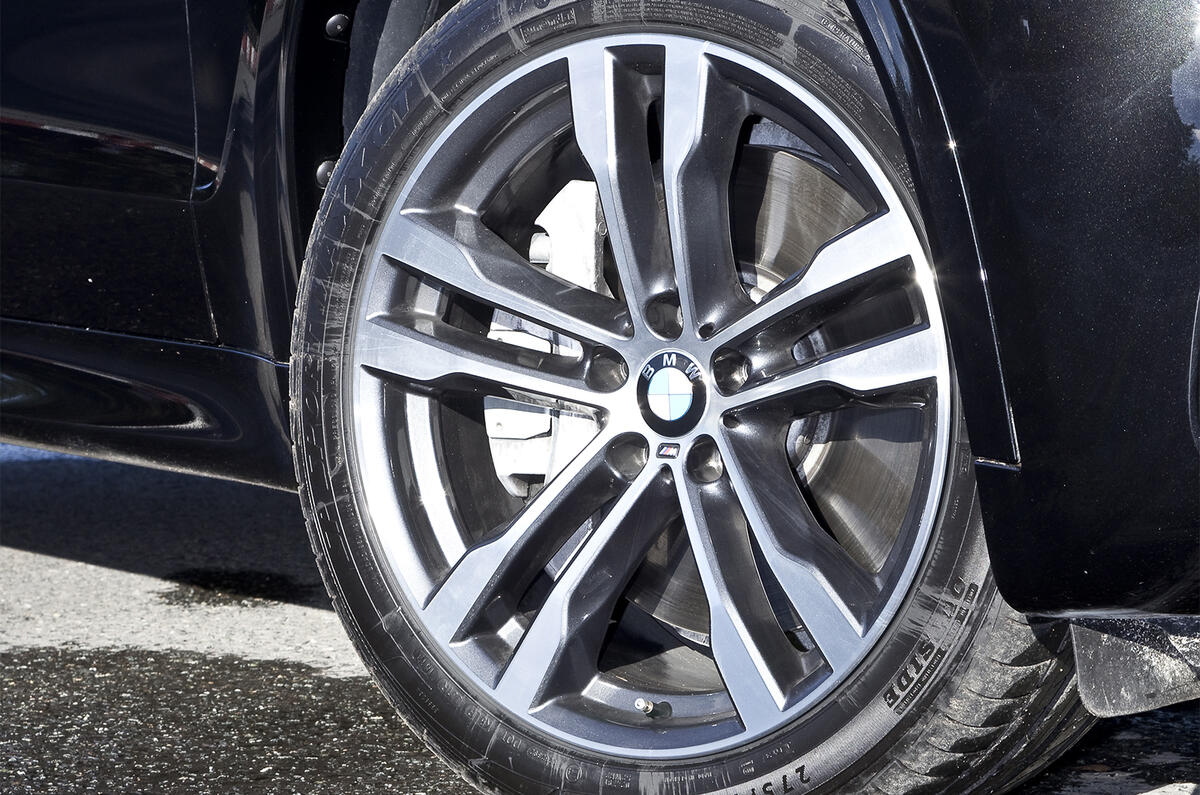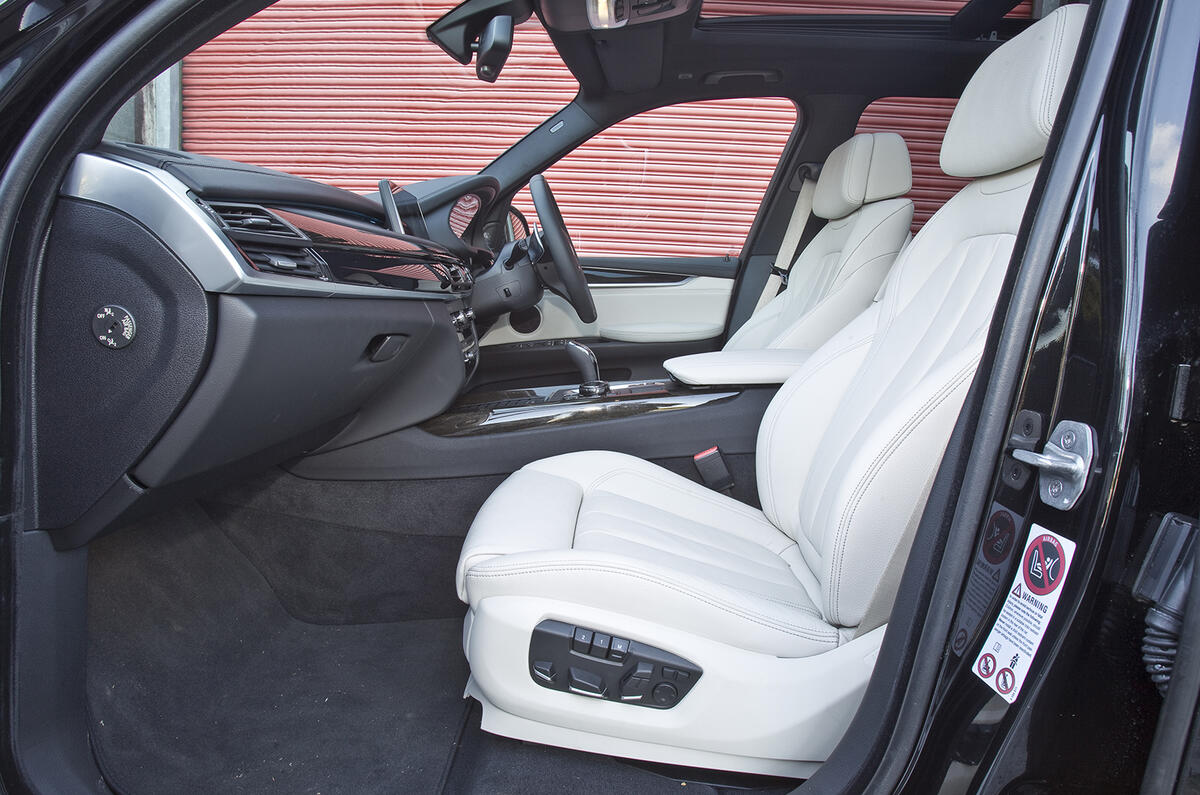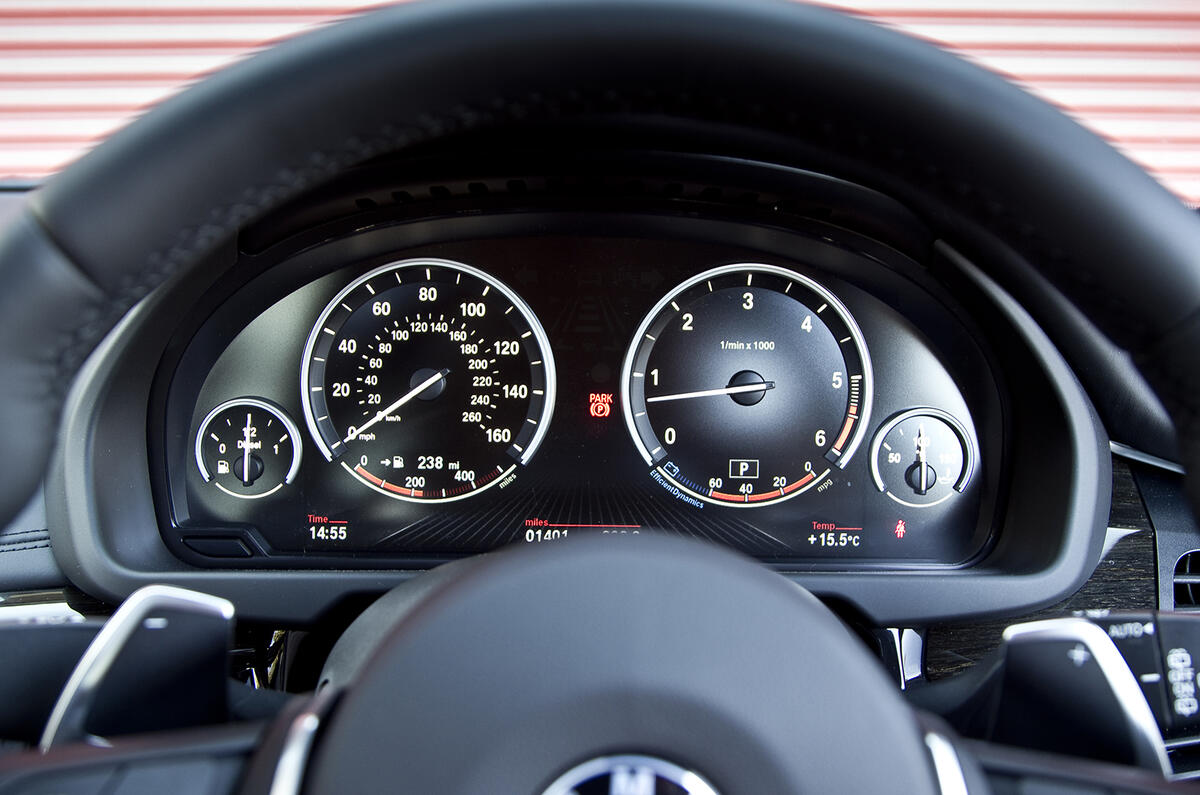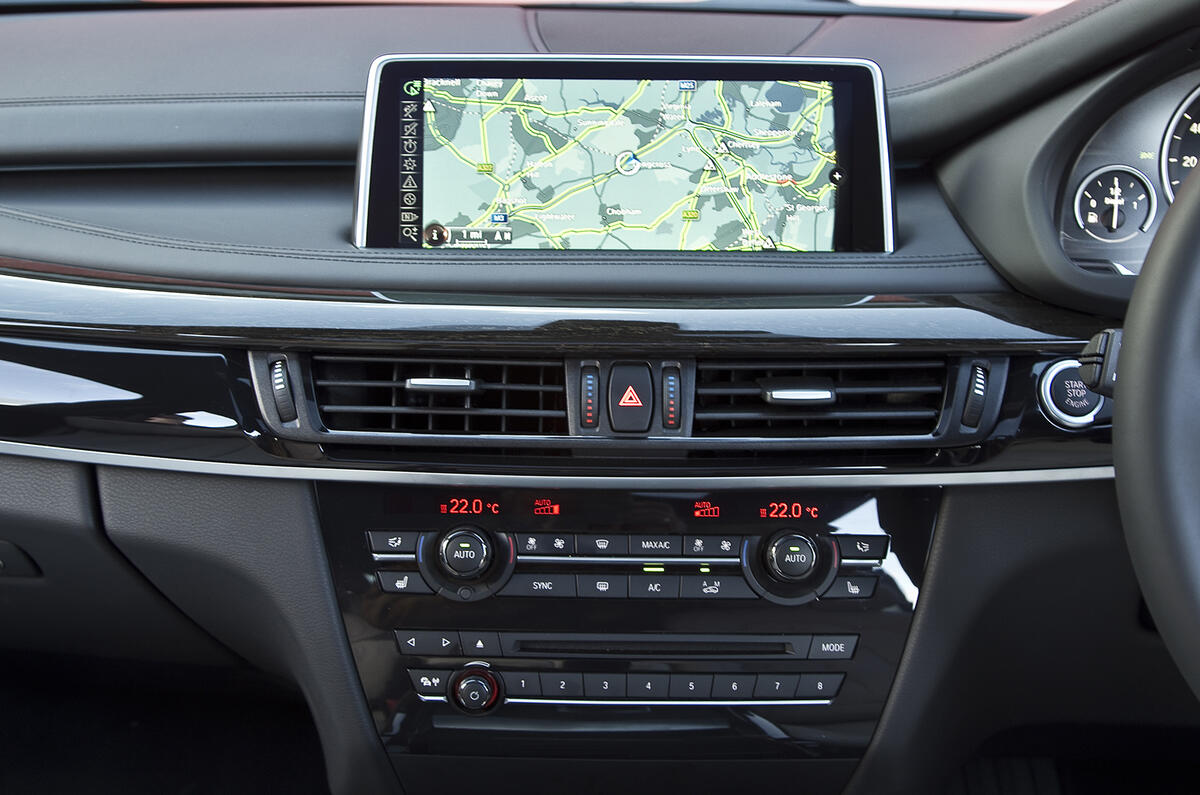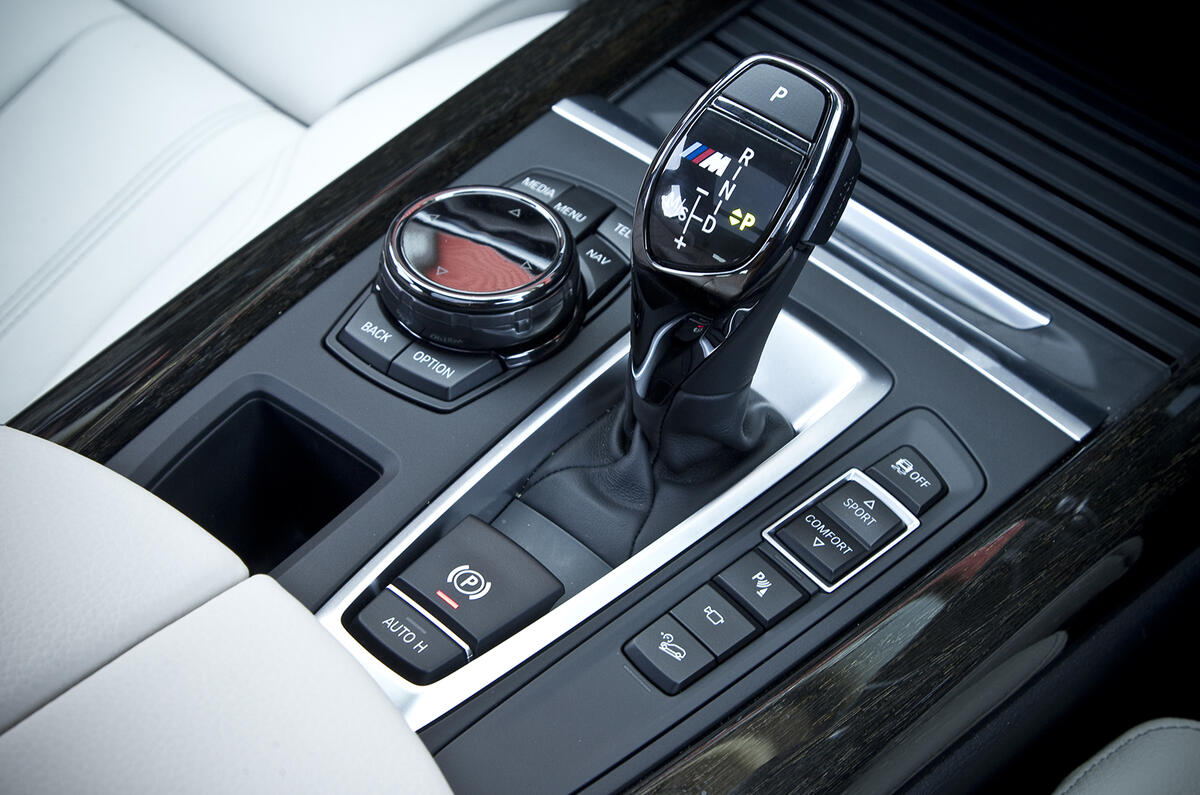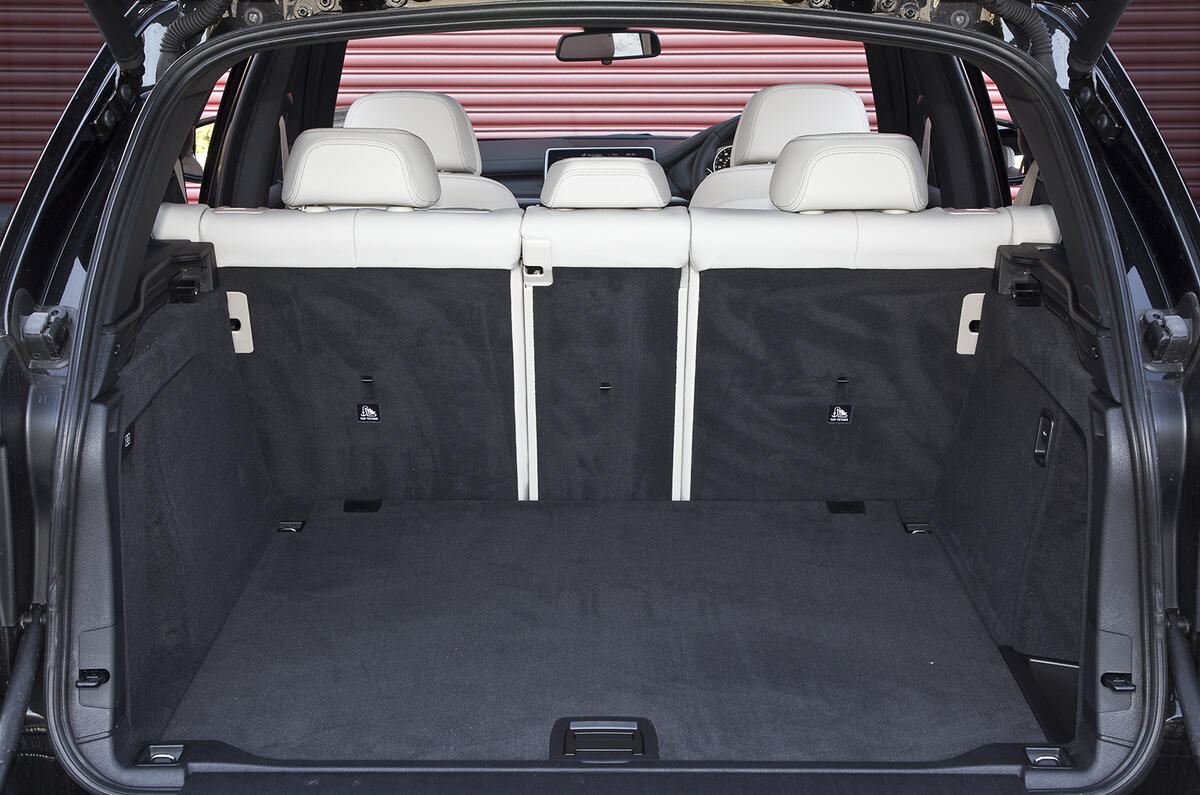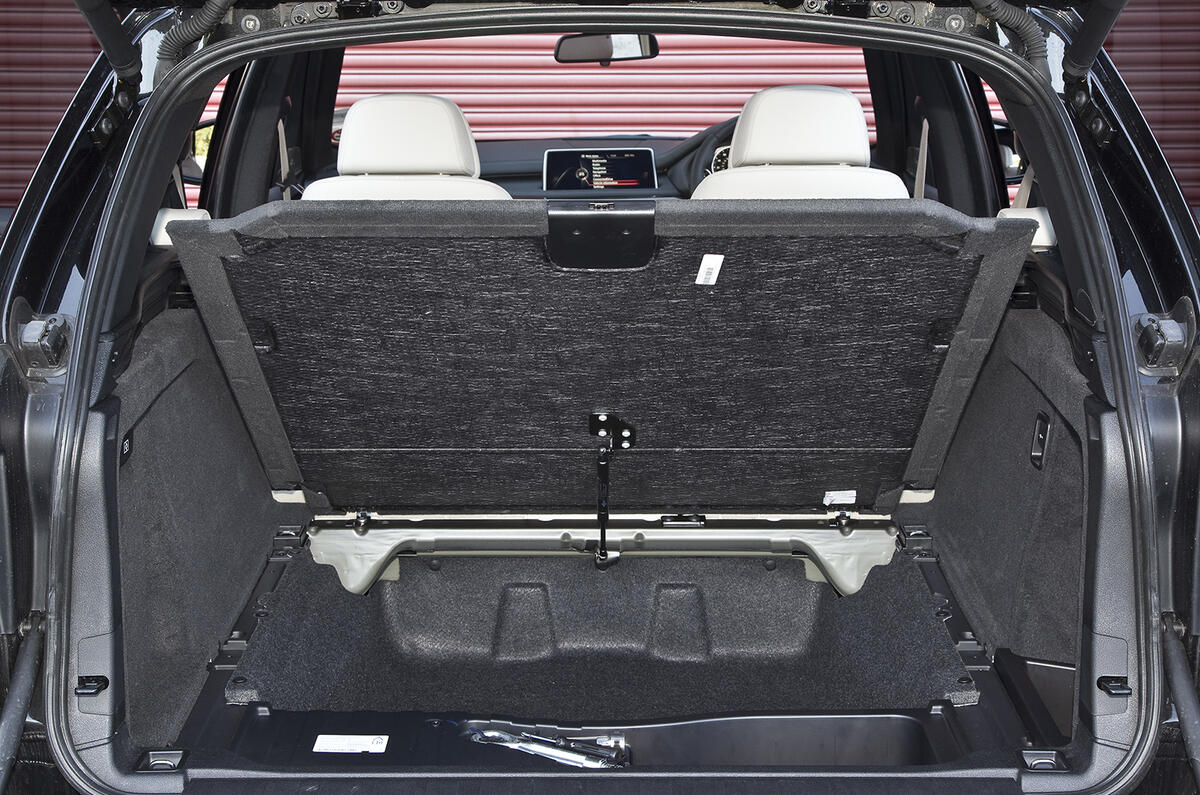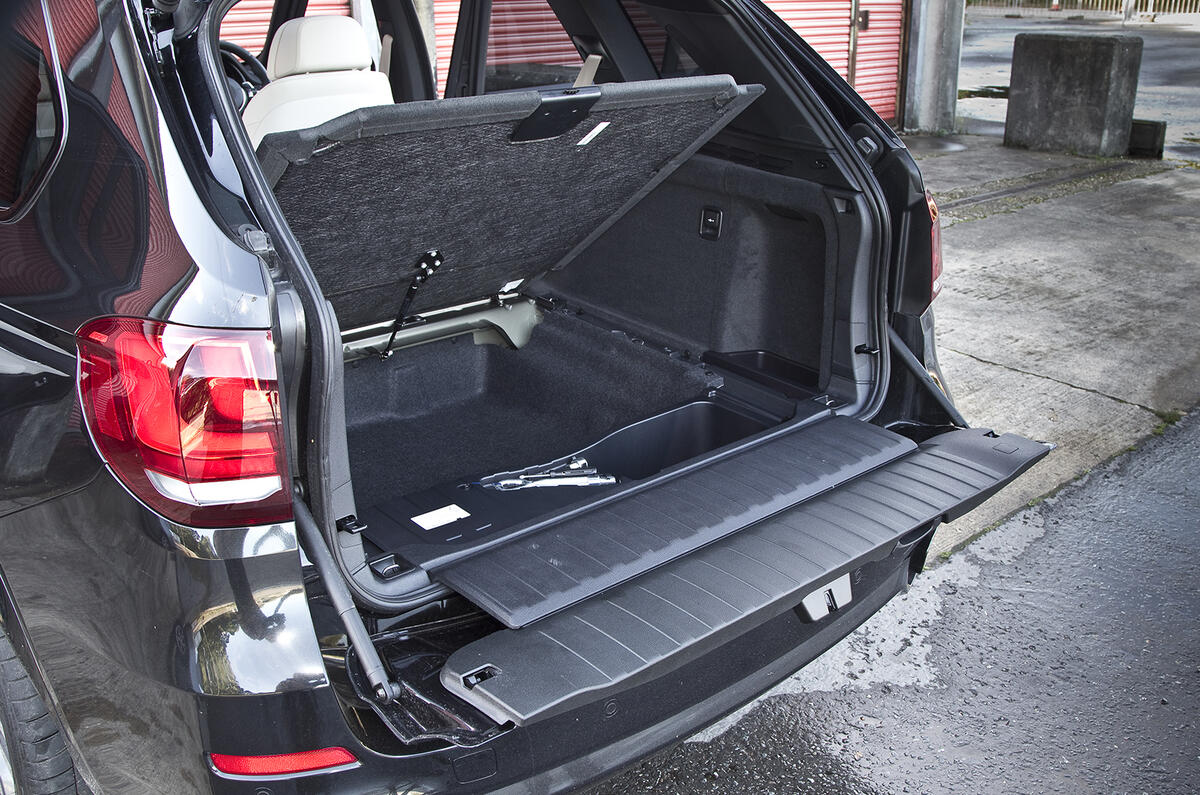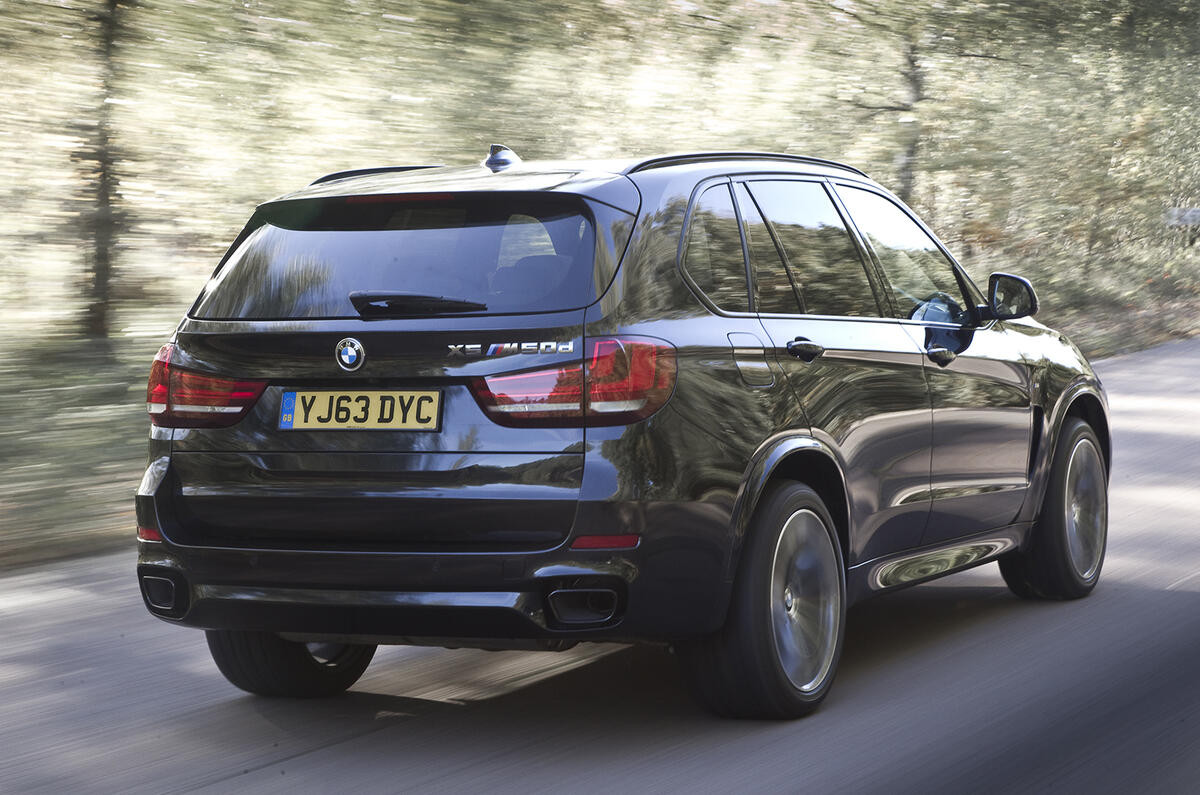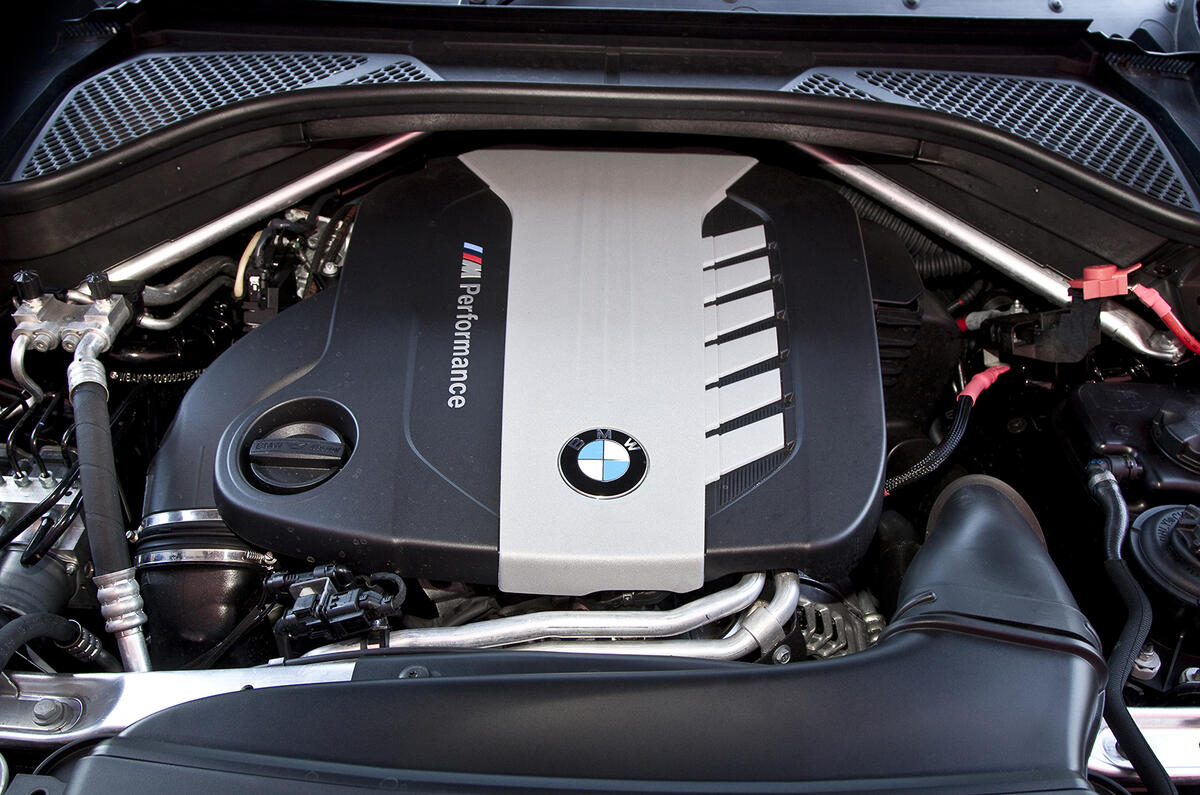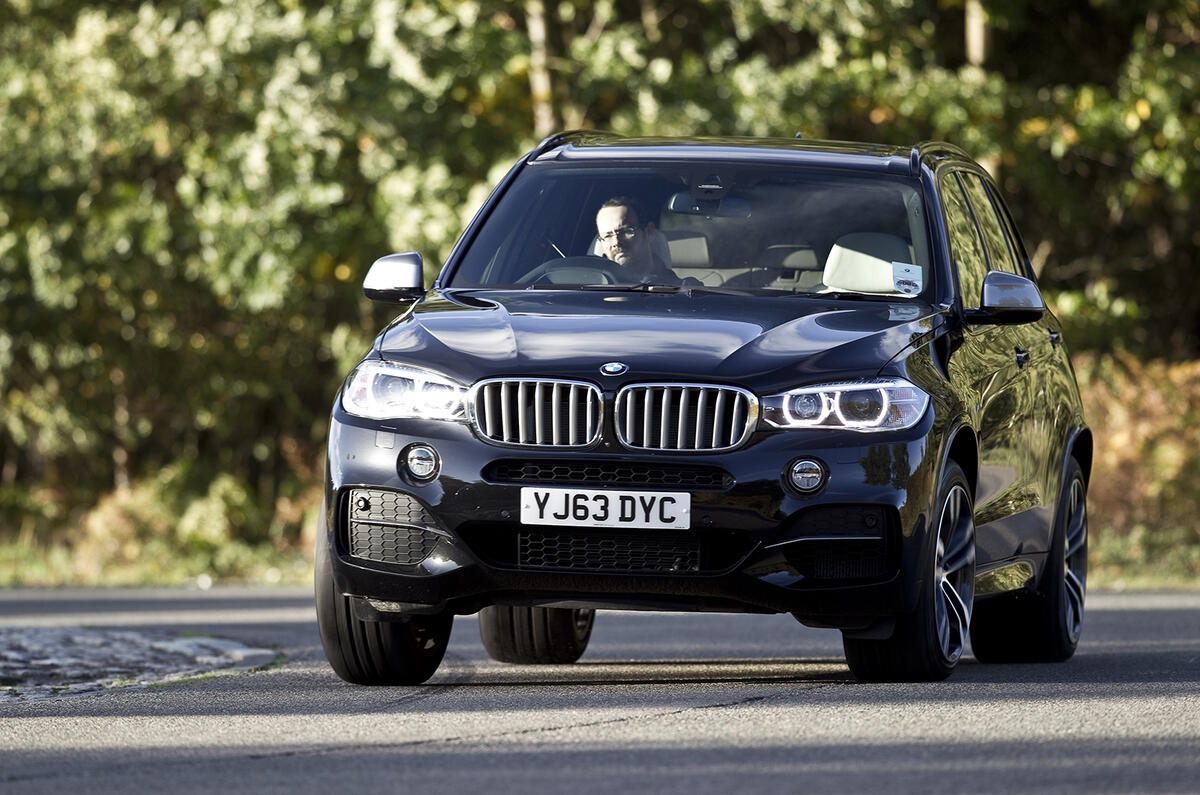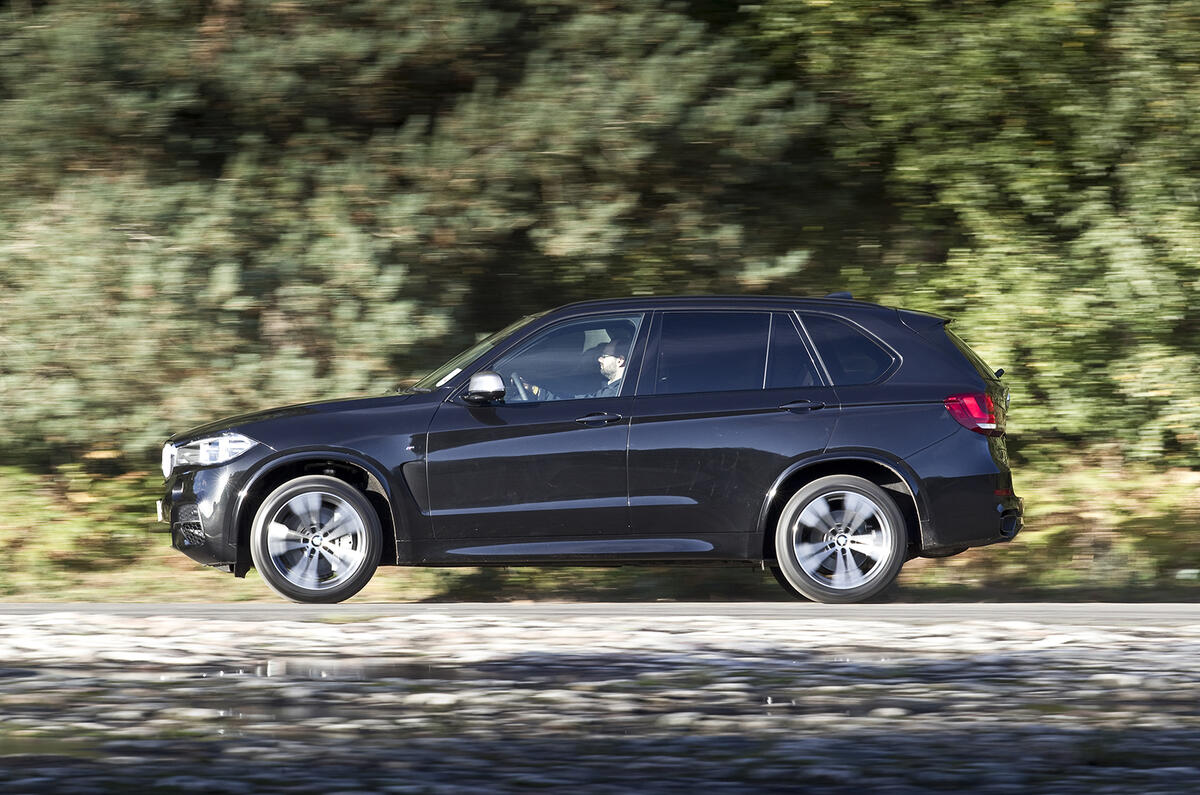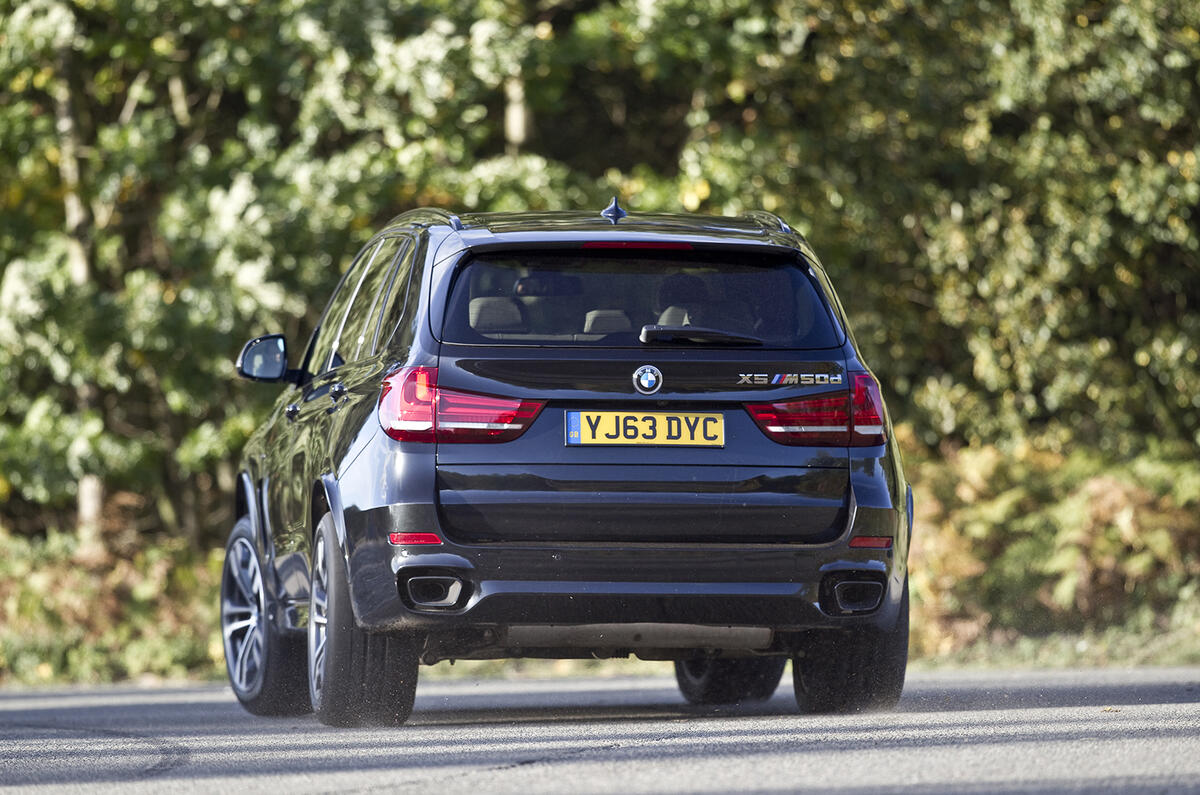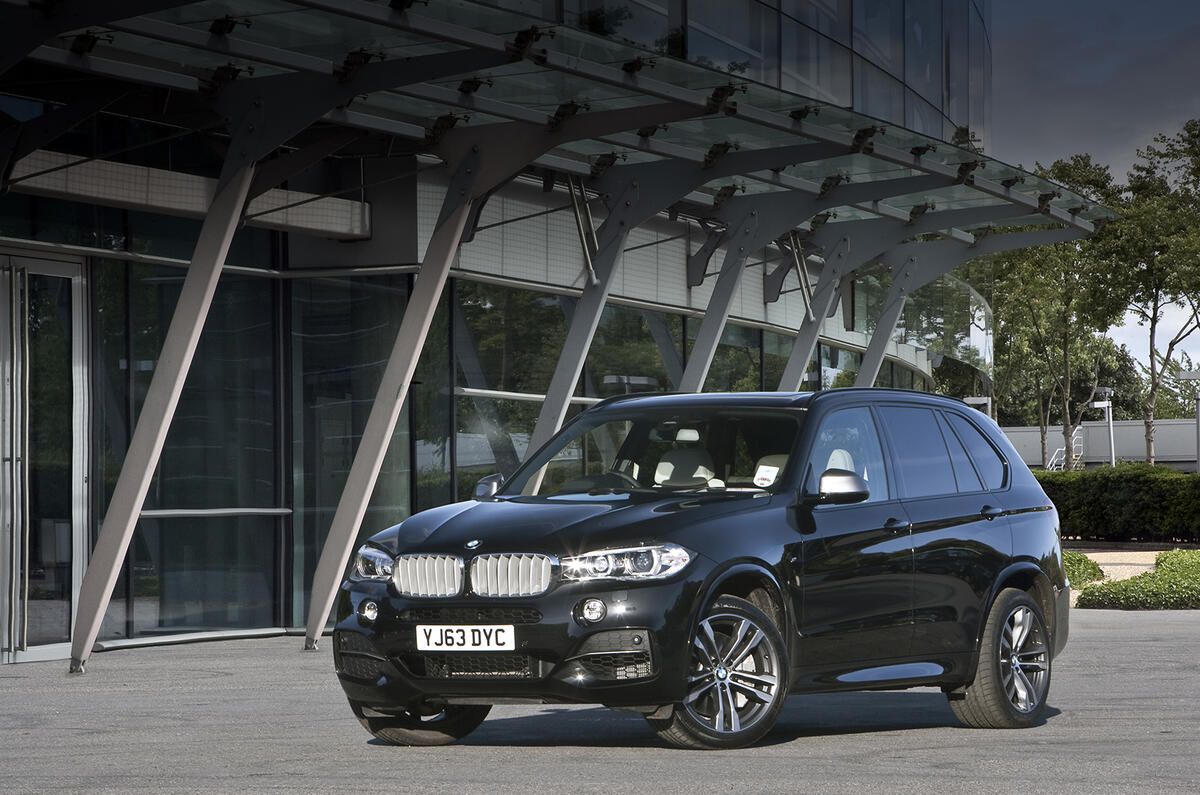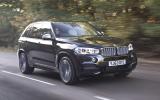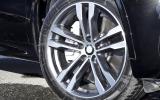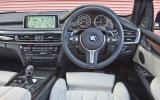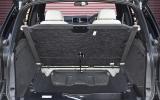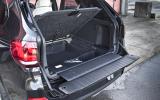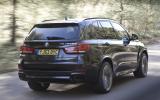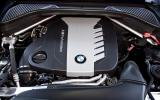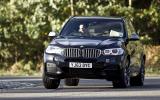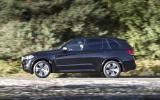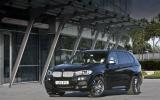The new car’s innards don’t move the model away from what will already be familiar to many as an X5. Thus, sophistication and a rifle-clean finish are on the cards, but not necessarily the special sense of superiority found in a Range Rover Sport or Porsche Porsche Cayenne.
As you sit in the captain’s seat, the dashboard’s indebtedness to what has appeared in the 3 Series and 5 Series and the naturally low ‘command’ driving position create a distinct saloon flavour.
This remains a premium product and, in expensive M50d finery, there is more than enough aluminium, polished wood and double-stitched leather to remind you of that fact. BMW has introduced two distinct optional styling packs – Design Pure Experience and Excellence – to offer alternative material choices.
Elsewhere, the X5 remains much the same package as before. There is a choice of comfort or sports seats as an option – our M50d test car came with comfort seats that, by and large, lived up to their name – and it’s still possible to spec a third row of seats.
The second row now splits 40/20/40 as standard and there is a sufficient, if not spectacular, amount of room for those with longer legs. The calibre of fit and finish hardly dilutes the farther you get from the front, and gains made in noise refinement – BMW claims 2.5dB across the range – will be felt just as keenly from the back.
A 30-litre increase in seat-up boot space means a competitive 650 litres for family buyers and a full 1870 litres for part-time hauliers. The split tailgate remains, offering additional convenience – especially now that BMW has made the top portion electrically powered as standard.
Standard sat-nav is always welcome, regardless of model, and it's no different in the X5, especialy when it's largely a pleasure to use. It does get better if you opt for BMW's optional ConnectedDrive services, though, which as well as the online hocus-pocus gives live traffic info.
BMW's standard entertainment system is perfectly functional. Harmon Kardon and Bang & Olufsen systems are available as options and can be supplemented with the optional Online Entertainment, which boasts access to 12 million music tracks. Internet connectivity also means web radio.
The real pleasure here is not that the X5 connects seamlessly with your smartphone, but that it does so through such a convenient and classy set of clicks and dial twirls. The latest incarnation of iDrive dials up the button damping, feeling more like an expensive cinema amp than an in-car menu selector. Combined with the intuitiveness of the interface, it has no rival at this or any price level.
Opt for the entry-level SE trim and such luxuries such as cruise control, front and rear parking sensors, heated front seats and xenon headlights all come as standard, while Hybrid SE models get adaptive suspension as well. Upgrade to the range-topping M Sport trim and you will more aggressive styling, sports automatic gearbox and electrically adjustable front sports seats. There is the opportunity to enhanced these models with the M Sport Plus pack which include bigger alloys, a head-up display and Harman and Kardon stereo.
The M50d sees only limited changes over the M Sport models including a M-division tuned servotronic steering set-up and a twin stainless steel exhaust design, while the boombastic X5 M gets adaptive LED headlights, bluetooth wireless charging, wi-fi hotspot preparation and numerous M-badges throughout the interior and exterior.



